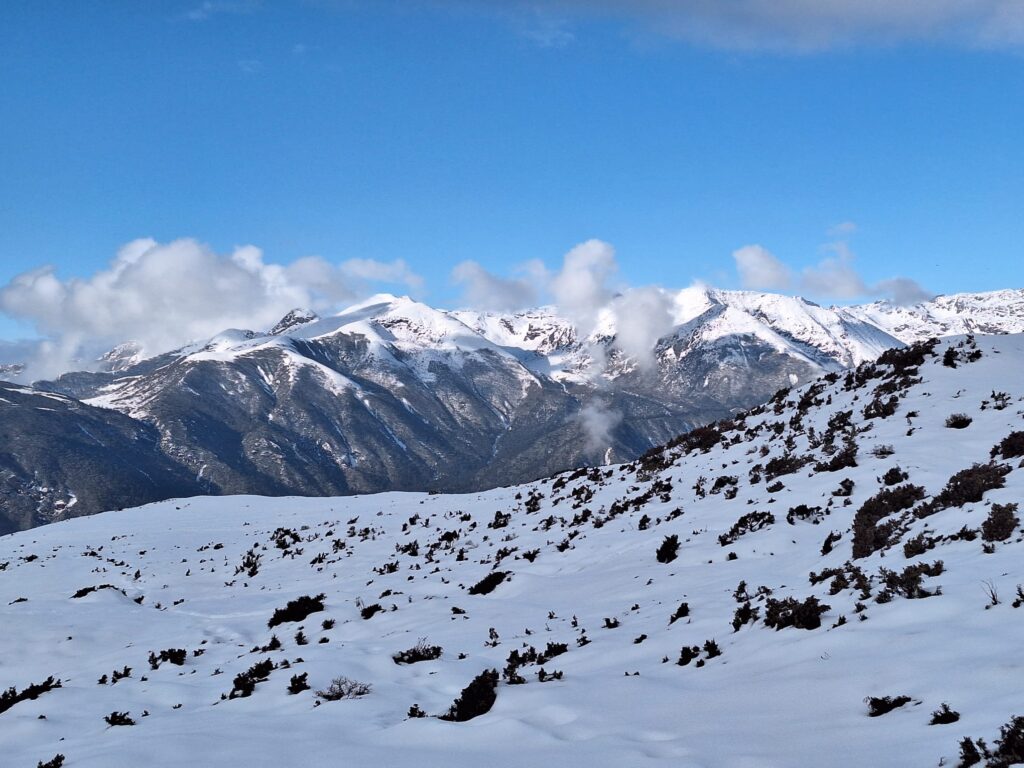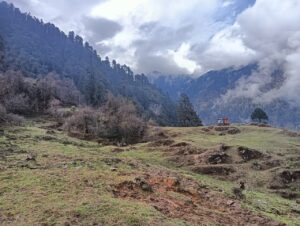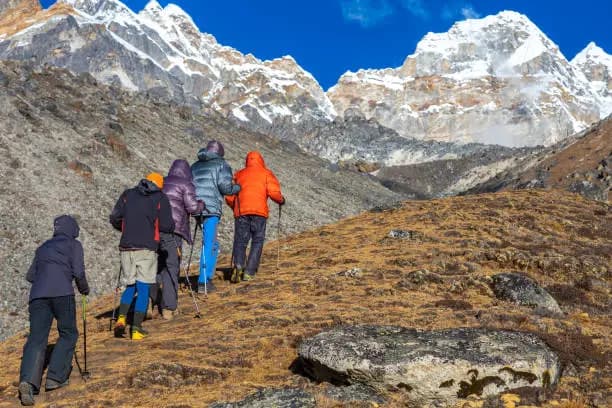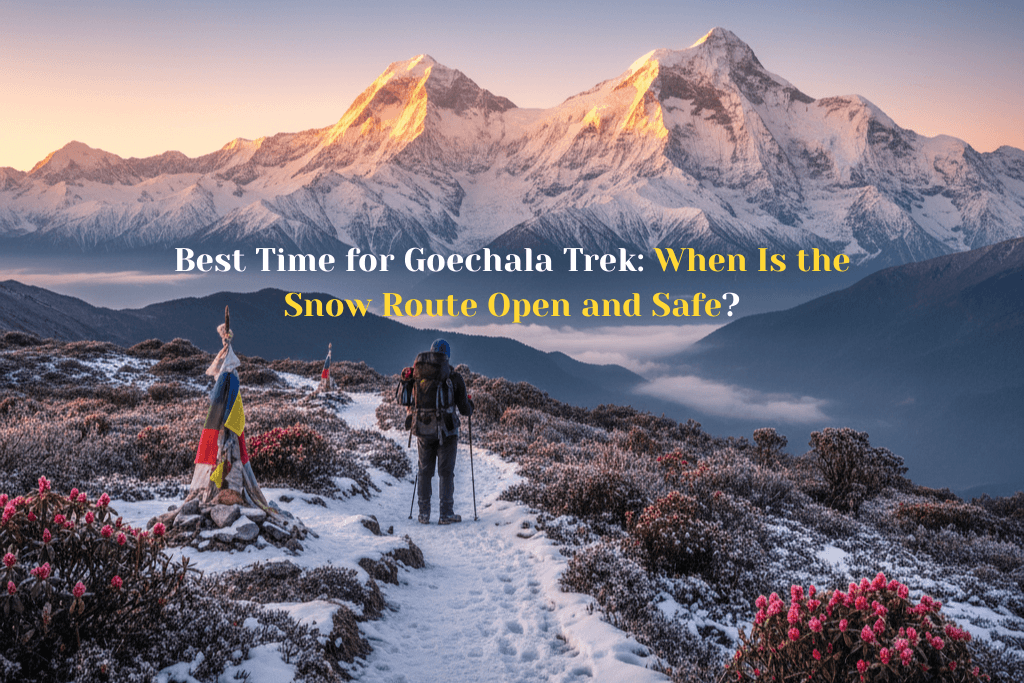The Sikkim Himalayas are an important portion of the Eastern Himalaya mountain range, in the northeastern part of India. An enchanting land with its dramatic beauty, chilling snow-filled peaks, and extreme biodiversity has always been an epitome for trekkers, travellers, or nature enthusiasts.

A destination for an Expedition in Sikkim Himalayas provides a concoction of mountaineering adrenaline and the peace of serene nature. Sikkim Himalayas: A Wonderland Embarking on an Expedition into the Himalayan Wild. In our article, we delve into the beautiful world of the Sikkim Himalayas and discover why it has become such a coveted destination among trekkers as well as for high-altitude trekking enthusiasts.
Introduction to the Sikkim Himalayas
The Sikkim Himalayas represent the northern borders of the Indian state of Sikkim, wedged in between Nepal, Bhutan, and China. It is not just a geographical enigma but it occupies a central place in the cultural and spiritual fraternity of Sikkim. The Sikkim Himalayas, crowned by the soaring peaks of Kangchenjunga—the most amazing view of which from Tiger Hill in Darjeeling is one of India’s greatest sights for lovers of Himalayan panoramas—presents a unique world of vivid natural beauty to attract tourists and adventurers.
A blend of rugged mountains, alpine meadows, crystal-clear lakes, and thick woods, along with the time-resisting villages. At 8,586 metres, the magnificent Kangchenjunga is the tallest of them all and is sacred to all Sikkimese people. Getting across the territory is replied to as the residence of some divine beings and many trekkers go to a similar zone not simply to achieve harder picks procedures; however, moreover, when you consider that for a wide variety of centuries the magnificence of this locale has been revered.
Historical and Cultural Significance
History in the Sikkim Himalayas is as lush as the mountain scenery. Sikkim used to be its own kingdom historically, and the Chogyals—the rulers of Sikkim—were devoted to the Buddhism of their country. Sikkim is a Buddhist state known for its history of Buddhism in the region and the Sikkim Himalayas are entwined with the spiritual life of these indigenous people. The landscape is dotted with Buddhist monasteries, stupas, and prayer flags, which provide more than just scenic beauty; they draw thousands of devotees to find spiritual solace in the region.
Religion—The Sacred Mountain: Among the most important expressions of the Sikkimese cultural heritage is the religious reverence for mountains. Especially, a large number of regional communities consider the Kangchenjunga very sacred, like the Lepcha, Bhutia, and Nepali. High-altitude lakes on the southern face of Kangchenjunga. According to the local belief, climbing Kangchenjunga or desecrating its slopes is sacrilegious and they have inherited this sanctified notion through their generations.
So much respect for nature, the mountains, and the surrounding ecology has led to the retention of its natural beauty, making it one of the most unexploited yet beautiful territories on earth, making the Sikkim Himalayas a paradise for adventure seekers.
Perfect for a Journey
The best time for a trek in the Sikkim Himalayas may also depend on other considerations like the type of trek and the kind of experience that you are looking forward to having. But the best months are between March and June and September and November.
Spring (March to June): This is the most comfortable time to visit, with clear skies and stable weather. This is the time when rhododendrons dot the entire region, and for those who like Nature in full bloom, this is also one of their best seasons.
Autumn (Sep – Nov): The month right after the monsoon, clear views of the Himalayas. The air is cool and the scenery is a vibrant green from the monsoon in full swing. This period is also popular among many trekkers and mountaineers who enjoy visiting the alpine region.
The winter months (December to February) are the best for snow and not great for trekking, as heavy snowfall will begin and temperatures drop below freezing. Conversely, the monsoon (June to August) should be avoided for treks since there is a possibility of landslides and heavy rainfall.
TREKKING ROUTES IN SIKKIM HIMALAYAS

You can also undertake trekking across the mountains of Sikkim Himalaya, as they have 1000s of trekking routes for people with different types of experience in the adventure. Several of the most famous treks in this region are as follows:
Kangchenjunga Base Camp Trek
Kangchenjunga Base Camp is one of the most popular treks in the Sikkim Himalayas. This trail route passes through incredible landscapes of forests, alpine meadows, and deep valleys. The ultimate aim is to get to the base camp of Kangchenjunga, where trekkers are treated to breathtaking vistas of the peak. While the trek is a tough hike with a high-altitude climb, the thrills offered are unmatched, and you will get to view firsthand how sacred this revered region is.
Goecha La Trek
Namely, the popular Goecha La trek in Sikkim delivers some of the grandest vistas, with Kangchenjunga and its clusters right there to be seen. In this trek you will have to walk into thick forests, pass many high-altitude passes and camp overnight at beautiful locations. Elevation of Goecha La summit: 4,940 meters It is this high-altitude mountain pass that gives mesmerising panoramic views of the Himalayas and hence is a must-trek for any mountain lover.
Green Lake Trek
Green Lake Trek is a peaceful and hidden trek that passes by the base of the Kangchenjunga amphitheatre and leads you through thick rhododendron forests, green terraced meadows, and Tibetan communities. And the most unique feature of the trek is the calm waters of Green Lake flanked by snow-capped peaks. Truly, this is an excellent mix of nature and culture.
Singalila Ridge Trek
Also Read: The Best Trekking Trails To Witness In Sikkim For the western part of the Himalayas in Sikkim, the Singalila Ridge trek can be a good choice. The trek follows the boundary between Nepal (on your left) and Sikkim (on your right) and offers some of the best views of the Everest range on the way, including Kanchenjunga and Makalu. The journey is also through the Singalila National Park, home to the iconic red panda, among other fauna.
Tsomgo Lake Trek

Sikkim Himalayas
For a quick, moderate-level trek, the Tsomgo Lake is a good one. Tsomgo Lake, at a height of 3,780 metres—also known as TsoMogo or Changu—is held sacred by the local Sikkim-Shaped hues. The trek to the lake provides some of the most beautiful sights of snow-capped peaks and its charming surrounding valleys.
Challenges and Preparation
The Sikkim Himalayas offer a great opportunity for trekkers and mountaineers, but with some challenges of their own unique to the region. These challenges include
Sikkim Himalayas High Altitude: The treks in the Sikkim Himalayas usually go through significant altitude gains if we can discuss base camps or summits, they are situated at a height over 3,000 metres. This is altitude sickness, and it matters that you acclimatise correctly, because if not, you’ll get really sick on the trek—dangerously sick.
Climate: The weather in the Himalayas of Sikkim is highly unstable. The skies can easily turn from clear to snowy, or rain is still present at higher altitudes. Must have the correct trekking gear; conditions can change quickly.
Difficult Terrain: Most of the trekking routes in the Sikkim Himalayas are quite rugged, with mythical ascents and descents, narrow mountain trails, and uncertain climatic conditions. This requires a considerable ability of physical fitness and stamina.
Those need an inner line permit to trek in various treks of Sikkim due to the area’s status as a restricted region. To protect the environment and preserve the region’s sanctity, the Sikkim government has established strict laws and regulations.
Flora and fauna of the Sikkim Himalayas

Extraordinary biodiversity is one of the defining characteristics of the Sikkim Himalayas. It harbours diverse flora and fauna, some of which are not found anywhere else in the world. As it is within the Eastern Himalayas biodiversity hotspot, the Sikkim Himalayas are home to thousands of unique floral and faunal species.
Flora: The area has a high diversity of plants, from tropical rainforests at lower elevations to alpine meadows and glacier areas at higher elevations. These forests consist of oaks, rhododendrons, bamboos, and other trees, including a wide range of medicinal plants.
Flora & Fauna: The forests of the Sikkim Himalayas are the sanctuary for very rare species such as, Red Panda, Snow Leopard, Himelayan Tahr and Musk Deer which have been classified as endangered, like very few other places in the world. The area is also roost to an ample number of birds to attract bird watchers around the globe, and this includes the Himalayan Griffon, pheasants, and many migratory species.
Conclusion
An expedition in the Sikkim Himalayas is one of a kind; it is an extraordinary experience that will be seared on your mind, combining adventure with Nature,culture and spirituality. The land of beautiful unexplored natural beauty and challenging terrains with immense mystery and holiness of the mountains growing towards the sky is what makes this place so different from others. The Sikkim Himalayas has something for everyone, be they seasoned mountaineers or just newbie wannabe mountain explorers. They way, being in physical challenges that mountains have to offer, experiencing the understanding of Masculinity of Life and getting to observe the perfect bond between nature, culture, and spirituality. The journey to the Sikkim Himalayas is not just a regular mountain trip; in fact, it is an expedition into nature’s heart that combines both beauty and adrenaline.















